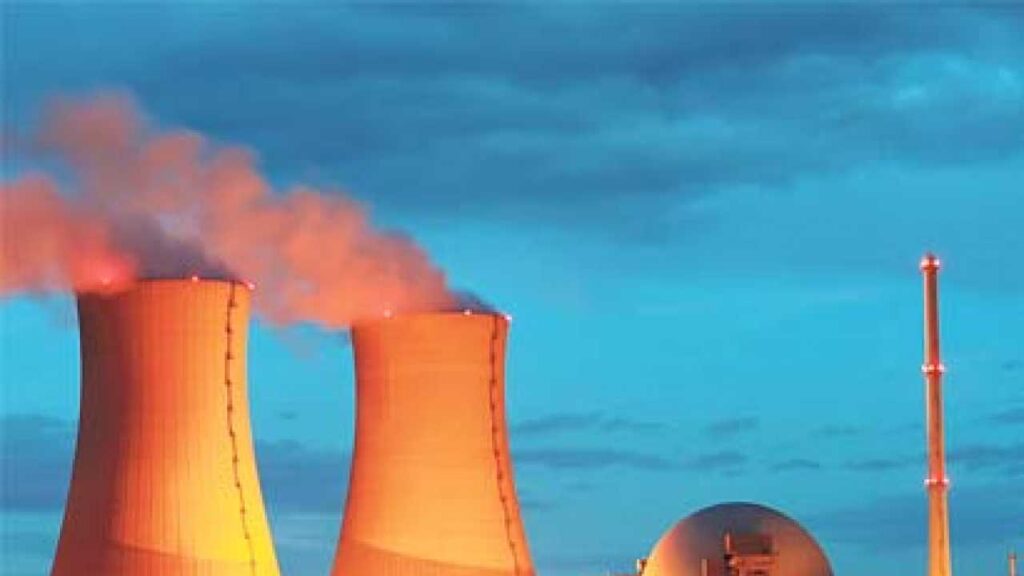These days, nuclear technology is used in several applications. Some of these include: medicinal, power and of-course military. Out of these, nuclear energy based power is getting popular. In any case, because of growth in applications, based on nuclear technology, there are several nuclear installations being found at industrial scale.
In general, nuclear installations are highly sophisticated, and, have lots of control measures in place to prevent any major hazard. Still, it’s a fact, that inspite of all these sophistications etc. accidents could still occur. The problem with nuclear accidents is – though, less frequent (due to high degree of sophistication and control measures), but, once an accident occurs, the impact is severe.
Some of the worst known nuclear accidents have been at:
1. Three Mile Island, near H Harrisburg Pennsylvania, USA in 1979
2. Chernobyl (in current Ukraine), in (then) USSR, in 1986
Besides, once in a while, smaller incidents of minor amounts of leaks get reported from around the world.
You should be prepared for nuclear accidents/disasters, if you stay in an area, which has some nuclear reactor/setup around it.
The problem with accidents/leaks with nuclear installation is that radioactive material might get discharged into the environment. This radioactive material could then enter human bodies. The primary ways for these radioactive materials to enter human-bodies is:
1. through breathing of contaminated air
2. through eating of contaminated food (including livestock animals – which might have inhaled/eaten contaminated air/food) – including milk from a cow which has grazed on contaminated grass!!
3. through drinking of contaminated water
4. through pores of skin etc – which might be in contact with contaminated air or water. This is very small – small enough to be considered as negligible.
The first thing in the step for preparedness is to understand the authority structure under the rule of the land, i.e. to understand, who will issue notification in the case of a failure, or, a chance of failure. This is to ensure that all the information received is only from authorized and reliable sources. The worst thing that you might want is to deal with multiple sources of information, your inability to sort out rumour from the real situation. In the same context, it should be worthwhile to also understand the means and mechanism that this competent authority will use to provide reliable information. There was a time, when, news agencies used to be a good, authentic source of information; however, today – with so many agencies, and, a lot of them being involved in a race to be the first ones, sometimes, it might not be possible for each of them to provide authentic and reliable information.
Usually, each nuclear installation would have a person/team authorized to communicate on matters related to disasters – at their locations and sites. For some nuclear sites, they might want to make use of sirens and/or Public Address System etc.
Next thing would be to understand the risk perception of your home/office, based on its distance from the nuclear installation. Typically, areas around a nuclear installation are divided into zones. A common classification is 3 zones: Central, Intermediate and Outer. Some of these zones could be further sub-divided into sub-zones. Depending on the nature of the incident, different zones might be at different risk levels, and, they might need different kind of mitigation efforts – hence, you should know the zone in which you fall.
Now, you should understand the terminology used for communication of risks at the nuclear facility. E.g. one of the common terminology might include:
● Early Warning: to mean – no or very little impact so far, but, the nuclear facility is in a situation, that the problem could soon increase
● Disaster Alert: to mean – a hazardous release of radioactive material has already happened, or, is very likely to happen
The above are just example usage of terminology. The actual terminology that has to be used is governed by the law of the country, and hence, you should understand the terminology for your nuclear location.
In case of an actual event, or, likelihood of a radiation leak, the competent disaster management authority will come into place, and, will issue guidelines etc. As a general population, it might be most prudent to comply with the guidelines issues by such disaster management authority in such situations. The disaster management authority is expected to issue specific guidelines, based on nature of events, weather patterns etc. So, stay-tuned to this kind of information to understand the risk-levels of your zone of residence/work.
However, this web-site provides some general information – which might be useful to the readers:
● First of all, stay indoors (unless, specifically asked to evacuate). By staying indoors, you are trying to reduce the level of your exposure to radio-active material. Similarly, bring your pets and livestock indoors/their stalls.
● Prepare for possible evacuation
● Arrange for iodine tablets
● Do Not consume freshly harvested food products – because, it might have been contaminated
● Do not use water which was outside, as it might have been contaminated
Now that we understand that we wont have access to fresh water, food etc., it might be good to anyways take general precautions
Some other precautions and guidelines that you should follow:
1. Unless you are competent and authorized to be working on the disaster relief/mitigation, do not drive/venture into the zone having risks. First of all, by entering into this area, you could be endangering yourself, and, secondly, you could be hampering other efforts which could include: movement of rescue vehicles, disaster response teams, and, maybe possible evacuation. Remember, a nuclear accident is not a show-item, that you have to watch. Stay away.
2. While staying indoors, try to stay in closed rooms – away from doors and windows, in basements etc. All mechanisms of air-circulation should be turned off. Once again, the idea is to avoid contamination from radioactive material, which is there in the atmosphere and air. For this purpose, when you build your house, it should be so constructed, such that all openings should be totally coverable – to prevent the entry of contaminated air into your house. The material chosen for building should also be such that it can effectively screen contaminated material, e.g. timber is very poor in its ability to screen radiation. So, timber houses would be very risky – in terms of contamination.
3. Care should be taken that you should be able to continue to receive further information that might be provided by the disaster management team.
4. One of the most active action that one can take is: take Iodine tables. Iodine tables actually saturate the thyroid glands, and thus, they prevent radio-active iodine (released due to the accident) from getting accumulated into the thyroid gland. Considering that, you might not want to get outdoors – during a disaster, to collect iodine tablets – it might be prudent to have a supply of such tablets, if you are staying in an area, which has a risk of seeing nuclear accident. It should be understood that ability to have uncontaminated proper food is more effective than having iodine. So, if uncontaminated food can be consumed, that should be given the first preference.
5. Iodine tablets also have severe side-effects. Hence, an overdose of iodine tables is not advisable. In general, older people should avoid iodine tables. The side-effects on them could be more harmful than the advantages that it might provide. Similarly, children and pregnant women should take a lower dosage.
6. The exact dosage of iodine tablets would be dependent on several factors, several of them being very local. Hence, local experts should be consulted on the exact dosage to be taken. WHO recommendations could act as an indicative information on dosage.
7. If evacuation is to be involved, it should be done before the formation of the radioactive clouds. However, there is only so much that one can do in his/her individual capacity – in the sense that we would need to depend on the disaster management authority to advise as to when should we start evacuating. However, when evacuating, try to do so in an orderly manner, without clogging the roads etc. Once again, try to stay tuned to sources of traffic information, so that you can use the least congested routes to evacuate.
8. Theoretically, post-evacuation, the law enforcement agencies are responsible for ensuring no-burglary/break-ins in your house. However, there is a limit to how much can they control/patrol. Hence, it would be good to secure your house properly. Also, since, its not known how long you might have to stay away, try to arrange for sufficient fodder for your livestock.
9. If you are not contaminated, you should NOT crowd the emergency centers and/or hospitals. As it is, dealing with nuclear radiation needs specialized knowledge, and, you don’t want to overburden the system, which would be already too stretched in case of a nuclear incident.
10. As soon as you are out of the effected area, or, are entering a non-contaminated area, you should:
○ Discard your contaminated clothing (so that the virgin area does not get further contaminated)
○ Wash those areas of your body, which were exposed, e.g. hands, face etc. If needed, take a bath. Needless to say, this step needs to be done using uncontaminated water. Imagine, you are just entering your house – from outside. Since the water stored in overhead tanks could also be contaminated, there is only a limited supply of decontaminated water. Hence, you should use your judgement, as to whether to take a whole-body wash, or, just washing the uncovered areas of your body.
Impact of Iodine tablets
During an incident of nuclear leak, radioactive iodine may travel a long distance through the air. This radioactive iodine then enters the human body through respiratory mechanisms. The longer this radio-active iodine stays in the body, the higher is the risk of various forms of cancers. Saturation of the thyroid (through non-radioactive iodine) could reduce the intake of radioactive iodine by a factor of 90. Extra iodine is excreted from the body.
The importance of taking iodine tablets is higher in places where, food is anyways iodine – deficient. Because of deficiency of regular iodine in food, this radio-active iodine might stay longer in the body. Thus, iodine tablets are used simply to eject these radio-active iodine from our body.
To the extent possible, iodine tables should be taken in – before the inhalation of radioactive iodine. Similar levels of benefits might be there, if the tablets are taken within 2 hours of intake of radioactive iodine. Even if the intake of iodine tablets is delayed by a few more hours, it still makes positive impact, by reducing the duration for which the radio-active iodine stays within the body. However, taking iodine tables more than 24 hours after intake of radioactive material is of no benefit. Rather, it might still subject the person to the side-effects.
Also, taking the iodine tablets too early is of no help. Once again, though of no help, it can still cause undesired side-effects. Hence, these tablets should not be taken without being advised, or, without having a good understanding of the chances of having inhaled/possibility of inhaling radioactive iodine. Usually, there is a window of several hours – within which iodine tablets might be taken effectively. Hence, it might be better to take the iodine tablets only when advised, rather than taking it too early – out of anxiety.
It should also be understood that inspite of so much importance being given to intake of iodine tablets, it only protects against the effect of radioactive iodine only. Other radioactive materials still play their role.
Dosage of Iodine (WHO recommendation)
Check your local centers for exact recommendation suitable for your locality
● Adults – older than 12 years: 1 tablet per day.
● Children aged 3 to 12 years: ½ tablet per day.
● Infants aged 1 month to 3 years: ¼ tablet per day.
● Neonates up to one month: one dose 1/8 tablet.
● Pregnant and breast-feeding women: two doses of 1 tablet each.
● Older people should not be given iodine tablets. They risk much more severe side-effects, mostly due to hyperthyroidism – specially, if they have been staying in thyroid deficient regions.
For pregnant women, this dosage offers protection to her as well as her unborn child. However, after the birth of this child, the intake of iodine tables should be informed to the doctor, so that the doctor can pay special attention to the child’s thyroid. For breast-feeding women, their breast-milk contains some amount of iodine. However, this amount might not be sufficient for the breast-fed child. Hence, the child should be given his/her own dosage.
Here, tablet means: 100 mg iodine tablet, or, 130 mg potassium iodide
About taking Iodine
1. Iodine tablets should not be taken on empty stomach.
2. If found difficult to take (say: for children), the tablet might be dissolved in some liquid (say: water or tea). However, the solution is not stable, and hence, should be taken immediately. It has a bad taste
3. The tablets are so designed that they can be easily broken into half or a quarter. For neonates (needing 1/8), a good way is to dissolve one half in liquid, and, then, throw away exactly half of the solution, and, give the remaining half to the infant.
4. Persons with known hypersensitivity to iodine should not take these tablets. However, such hypersensitivities are relatively rare.
5. Persons with hyperthyroidism should also take this iodine, alongwith their regular treatment. However, they should inform their doctor.
6. In some cases, iodine tablets could lead to upset stomach, rashes of skin, oedema, sore throat, watering eyes, nasal catarrh, swelling of the salivary glands and increase in body temperature.
7. Iodine tablets should be stored in a cool and dry place – just like most other prescription medicines.
8. If for some reason, iodine can not be taken, one may take perchlorate. However, percholates are less effective than iodine (in blocking the accumulation of radio-active iodine).


